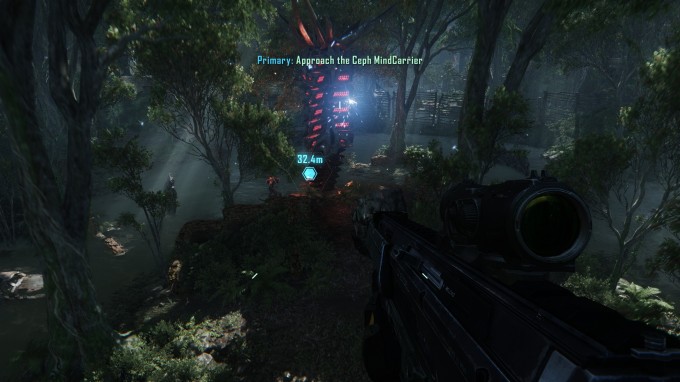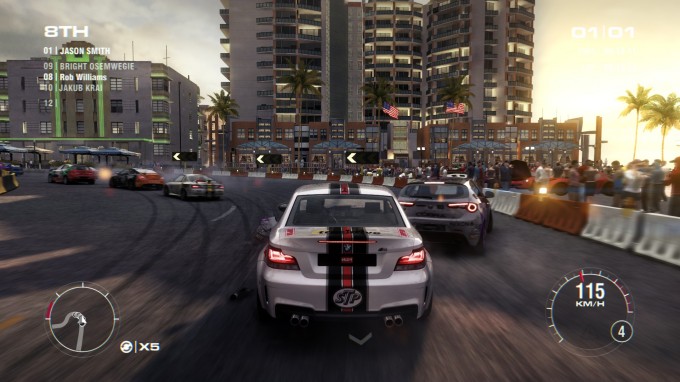- Qualcomm Launches Snapdragon 4 Gen 2 Mobile Platform
- AMD Launches Ryzen PRO 7000 Series Mobile & Desktop Platform
- Intel Launches Sleek Single-Slot Arc Pro A60 Workstation Graphics Card
- NVIDIA Announces Latest Ada Lovelace Additions: GeForce RTX 4060 Ti & RTX 4060
- Maxon Redshift With AMD Radeon GPU Rendering Support Now Available
Sapphire Radeon R9 280 Dual-X 3GB Graphics Card Review

When we took a look at EVGA’s GeForce GTX 760 Superclocked a couple of weeks ago, we lacked the ideal card to compare it to. With Sapphire’s Radeon R9 280 Dual-X in the house, retailing for just $10 shy of EVGA’s, we’ve managed to remedy that problem. So, let’s dive in, and see how both fare through our battery of tests.
Page 4 – Game Tests: Crysis 3, GRID 2
When the original Crysis dropped in late 2007, it took no time at all for pundits to coin the phrase, “Can it run Crysis?“, almost to the point of self-parody. At the time, the game couldn’t have its graphics detail maxed-out on even top-of-the-line PCs, and in reality, that’s a great thing. I’d imagine few are opposed to knowing that a game could actually look better down the road as our PCs grow into them. As the series continued, Crytek knew it had a legend to live up to, and fortunately, Crysis 3 (our review) lives up to the original’s legacy.
Manual Run-through: There’s no particular level in Crysis 3 that I could establish was “better” for benchmarking than another, but I settled on “Red Star Rising” based on the fact that I could perform a run-through with no chance of dying (a great thing in a challenging game like this one). The level starts us in a derelict building, where I traverse a broken pipe to make it over to one rooftop and then another. I eventually hit the ground after taking advantage of a zipline, and make my way down to a river, where I scurry past a number of enemies to the end spot beneath a building.
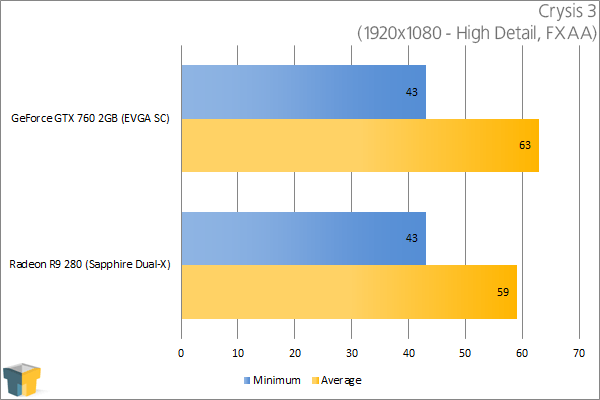
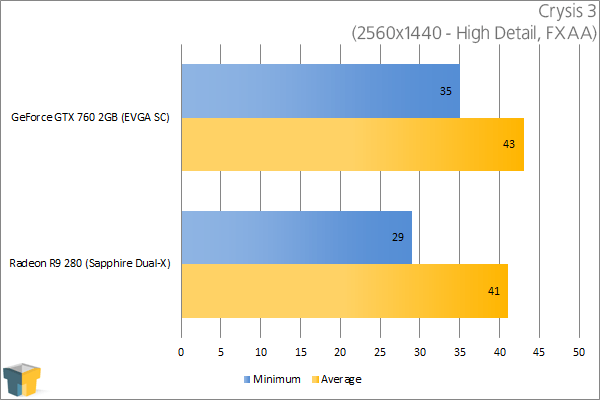
Crysis 3 lives-up to the tradition of a game that requires a good amount of GPU power to run well while looking well, but both of these cards manage to deliver a fantastic gameplay experience at 1080p.
GRID 2
For those who appreciate racing games that are neither too realistic nor too arcade-like, there’s GRID. In GRID 2 (review), the ultimate goal is to build a racing empire, starting from square one. Unlike most racing titles that have some sort of career, the goal here isn’t to earn cash, but fans. Whether you’re racing around Abu Dhabi’s Yas Marina or tearing through a gorgeous Cote d’Azur coastline, your goal is simple: To impress.
Manual Run-through: The track chosen for my benchmarking is Miami (Ocean Drive). It’s a simple track overall, which is one of the reasons I chose it, and also the reason I choose to do just a single lap (I crash, often, and that affects both the results and my patience). Unlike most games in the suite which I test twice over (save for an oddity in the results), I race this one lap three times over.
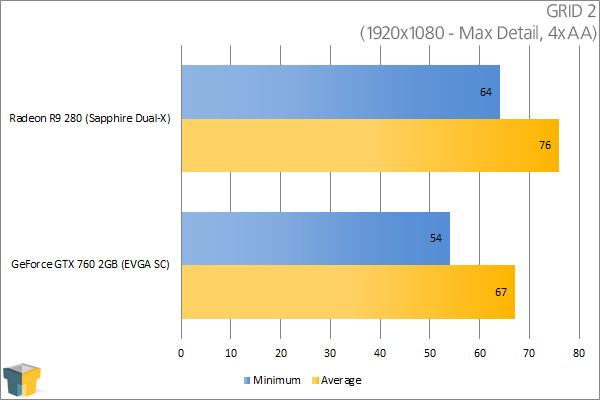
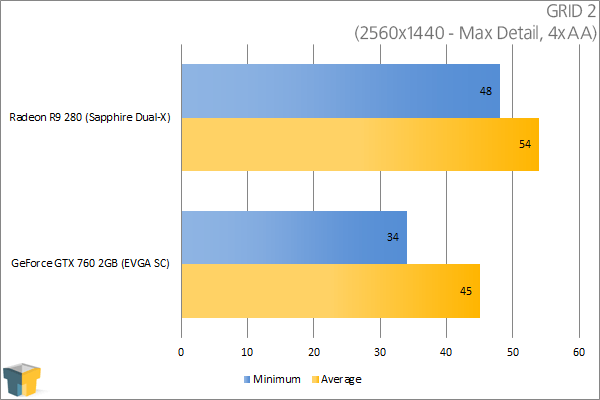
As covered on the testing methology page, GRID 2 is a neutral title in the AMD vs. NVIDIA battle, but despite the nearly equal performance we’ve seen up to this point, AMD’s card managed to surpass NVIDIA’s here by a fair margin. Both cards deliver great performance at 1080p, while AMD’s card might have an easier time getting away with these detail settings at 1440p for some gamers.
Support our efforts! With ad revenue at an all-time low for written websites, we're relying more than ever on reader support to help us continue putting so much effort into this type of content. You can support us by becoming a Patron, or by using our Amazon shopping affiliate links listed through our articles. Thanks for your support!




